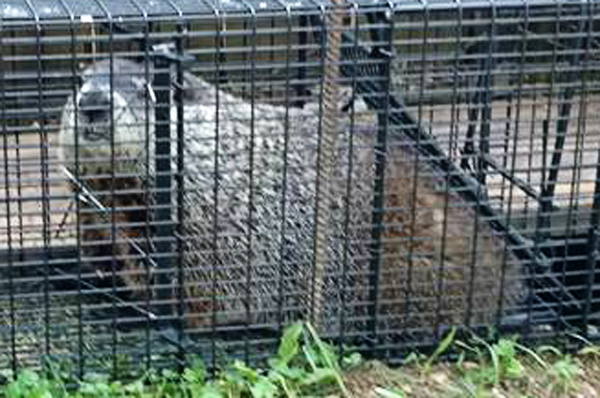- info@wildlifeanimalcontrol.com
Call us for help in your town
Wildlife Control Education
How do wildlife rehabilitators handle groundhogs?
Groundhogs are injured in many ways, such as bites from other animals or when they get struck by a car. Sometimes, people try to trap them and only manage to wound the groundhog. Animal Control, veterinary clinics or animal shelters will often take groundhogs who have been injured in order to rehabilitate them, and release them back into the wild once they are strong enough. It is also common to find litters of baby groundhogs without their mother (who probably fell prey to one of the above scenarios). With either injured adult groundhogs or lost baby groundhogs, rehabilitation is the difference between life and death.

If the groundhog has been injured, it is necessary to keep the animal caged because they tend to become violent when they’re hurt, like most animals. Rehabilitation for injured adults usually only involves feeding and rest, but sometimes the animals are sedated and operated on if they have a mortal wound or compound fracture. It’s rare to find a rehabilitation clinic with that sort of budget though, so most just try to keep the groundhog quiet, as well as provide plenty of food and water. Rehabilitation also serves as a socialization opportunity for the groundhogs, who have most likely been separated from their species for quite some time before they are released. This helps ease them back into the wild, as they will know how to interact and find a burrow when they are fully healed. As soon as they are fully healed, generally 6-8 weeks depending on their wounds, the groundhogs can be reintroduced into the wild. It’s important to not keep them captive for too long, as their instincts dull and their odds of survival decrease.
Learn more: Will homeowners insurance pay for raccoon damage?
Baby groundhogs often take a little bit more care and effort to keep alive. Baby groundhogs are with their mother around the clock for the first 4-6 weeks and are often not considered “adults” until 13-14 weeks. Because baby groundhogs can die without proper food and care, rehabilitation clinics use Esbilac, a puppy milk replacer, to feed them and help mimic their mother’s feeding. Rehab techs must also make sure that groundhog babies eliminate their bowels and urinate frequently, as ruptured bladders or intestines are often what kill a captive baby. Techs also must make sure the babies are always clean, as their fine hair is coming in and can easily be ripped out if they have food or urine or feces left on their bodies. Techs keep the babies in cages and handle them as minimally as they can. Once the babies have reached 13-14 weeks, they are introduced into a heavily groundhog populated area, where they will have the best chance of survival.
Rehabilitation for groundhogs is incredibly effective, and keeps the population thriving.
Go back to the How to get rid of groundhogs home page.
Need groundhog removal in your hometown? We service over 500 USA locations! Click here to hire us in your town and check prices - updated for year 2020.

















